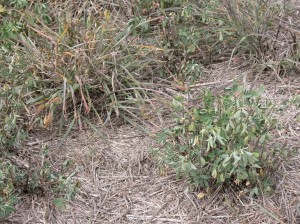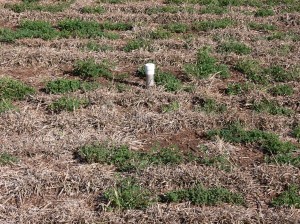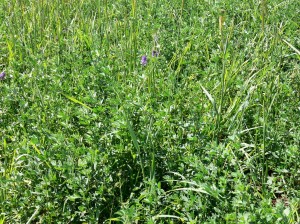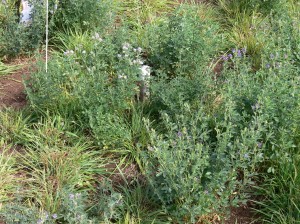Manage ground cover with lucerne-grass mixes
Lucerne is the most widely sown and adapted perennial legume on the Northern Slopes of NSW, but has fallen from favour in recent years. One reason for lucernes decline is its potential when grazed for low ground cover and associated high risk of surface runoff and erosion. Lucernes poor performances in variable rainfall years, low growth in winter, and potential for bloat in cattle are also issues.
Research conducted at Tamworth EverGraze Proof Site addressed this issue with lucerne-grass mixes. The research showed that pastures with a mixture of lucerne and tropical perennial grasses have potential to increase total dry matter production and spread its distribution more evenly through the year, thereby reducing feed gaps and providing greater resilience in variable seasons. Ground cover of the lucerne-grass mixes was able to be maintained above the minimum benchmark of 70% most of the time, where in a pure lucerne stand, ground cover dropped to as low as 20%. Full details of this work can be found here.
 |
 |
 |
 |
| Lucerne and premier digit mixes showing good ground cover throughout autumn, winter, spring and summer (clockwise from top left). | |
Further Information
- Tamworth EverGraze Proof Site key message – lucerne-grass mixes outperform pure grass pastures on the North West Slopes of NSW
- EverGraze Action – Growing and using lucerne
- FFI CRC Tropical Perennial Grasses Guide for NSW
- Primefact (NSW DPI) – Cocksfoot
- Tropical grass establishment budgets
- Lucerne and clover establishment budgets
- Primefact – Tropical perennial grass for northern inland NSW
- Boschma SP, Lodge GM, Harden S (2010) Seedling competition of lucerne in mixtures with temperate and tropical pasture species. Crop & Pasture Science 61, 411-419.

